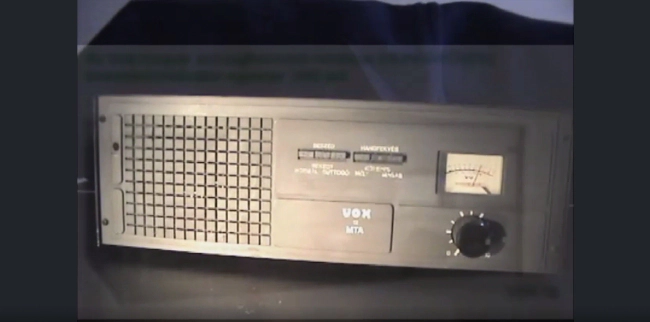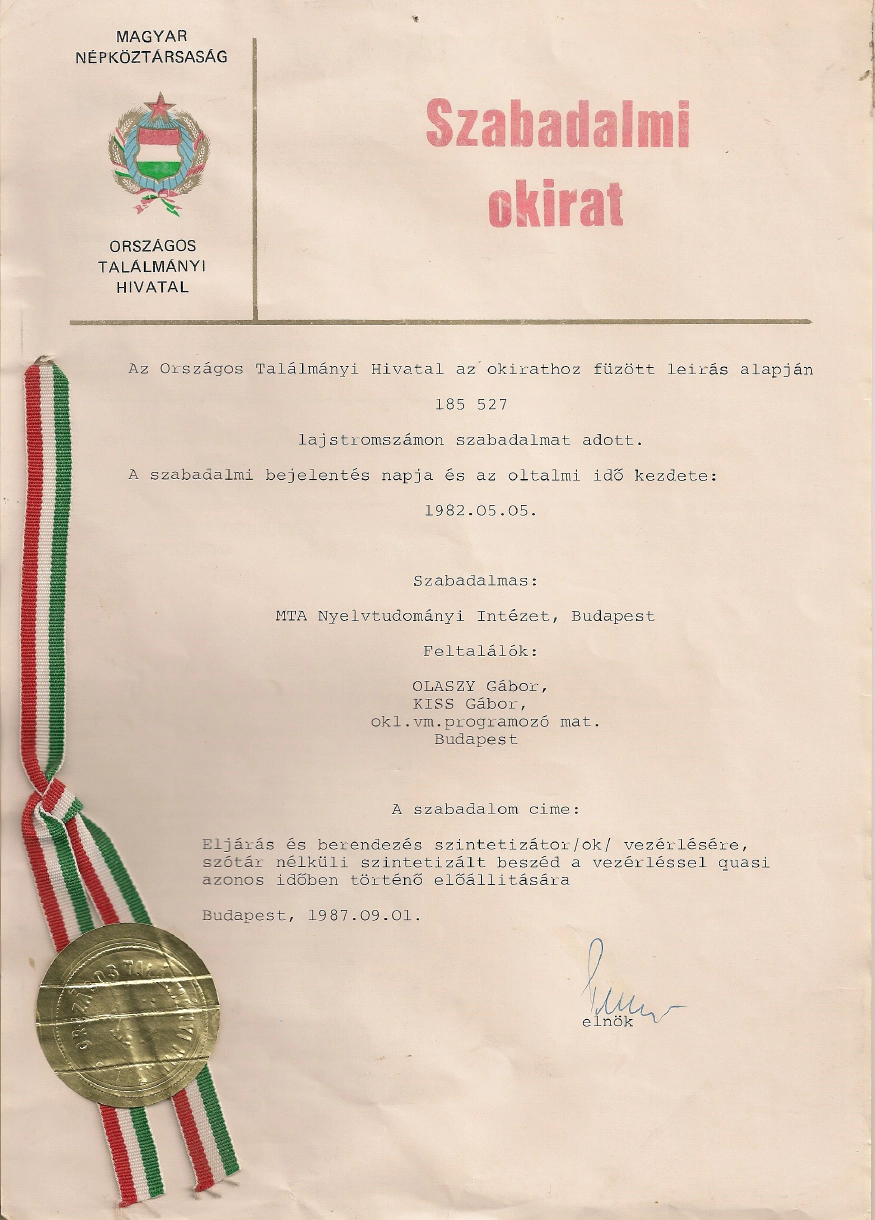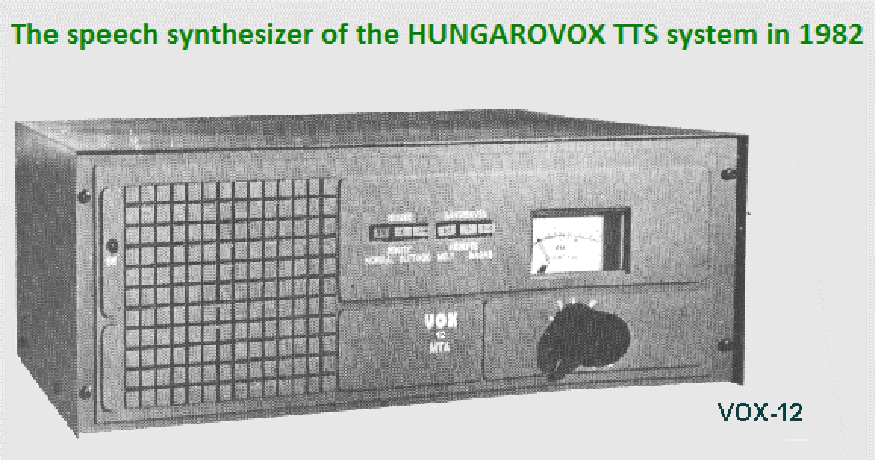Hungarovox
The first Hungarian speaking text-to-speech synthesiser
The revolutionary change in speech synthesis has been done by computers. The first computer-controlled speech synthesizers were developed in America and Sweden in the late 1960s. A decade later, Hungary (1979) also joined to this research, thanks to the phonetician Kálmán Bolla, who was at that time the head of the Department of Phonetics at the Institute of Linguistics of the Hungarian Academy of Sciences.
The first Hungarian text-to-speech system - HungaroVox - was created in the phonetics Laboratory of the department. The system could read any Hungarian typed text (1982). The three creators of the system were: Gábor Olaszy, Péter Nikléczy and Gábor Kiss. This system is a patent of the Institute of Linguistics of the Hungarian Academy of Sciences (1982, registration number: 185527). The text of the patent in Hungarian is given here.
HungaroVox was the first text reader in Hungary. The system consisted of a shoe-box-sized, digitally controlled analog formant synthesizer (VOX-12), a PDP 11/34 DEC (bookcase-sized) computer with a central memory of 64 kByte, and a control program written in Fortran. Hungarovox operated on the principle of formant synthesis, so the speech synthesizer unit was controlled with phonetic parameters (formants, durations, intensities, etc.). The speech was generated using 370 kinds of phonetic “sound slices”. During its control, the VOX-12 received data from the computer every 10 ms, always according to the given speech sound/transition. His voice was robotic, but clear. He could sing, whisper, speak in a hoarse voice. The patent was purchased by the Budapest Electroacoustic Factory. The factory made a pilot piece of it. It was publicly presented in the spring of 1983 in the Pavilion of the Hungarian Academy of Sciences at the Budapest International Fair. HungaroVox also had a big press response.
VOX-12 demo


